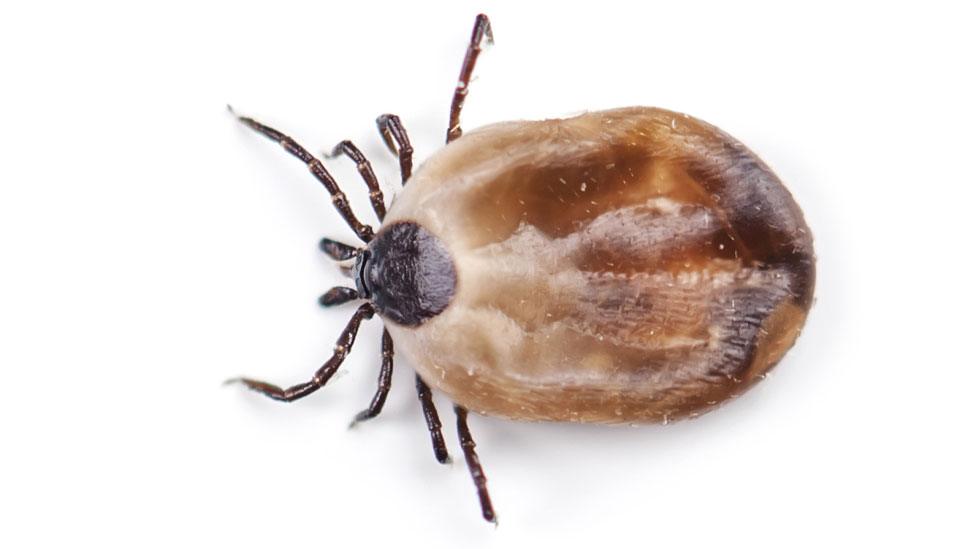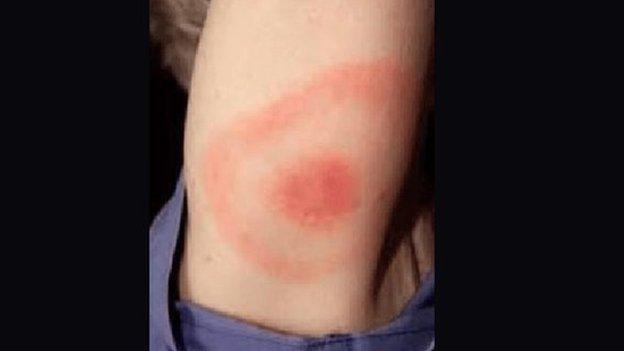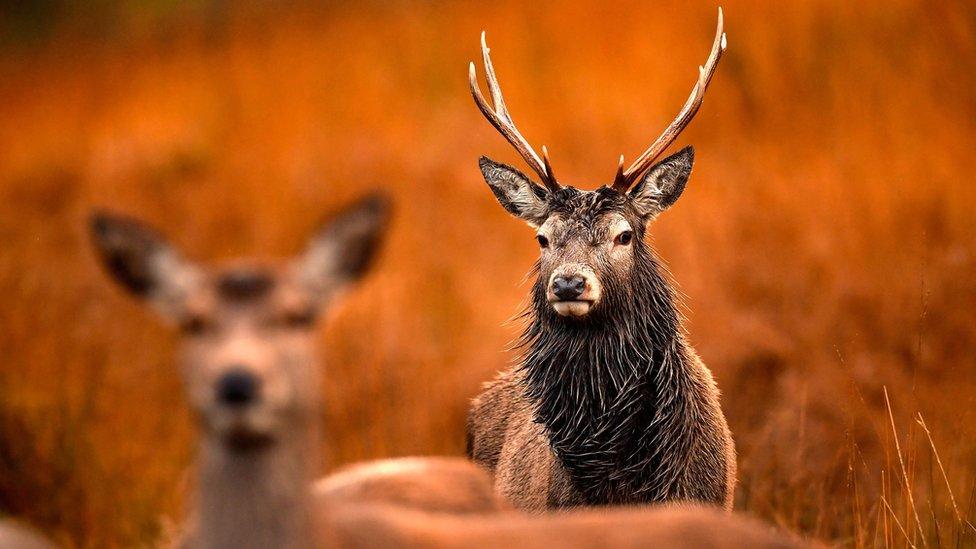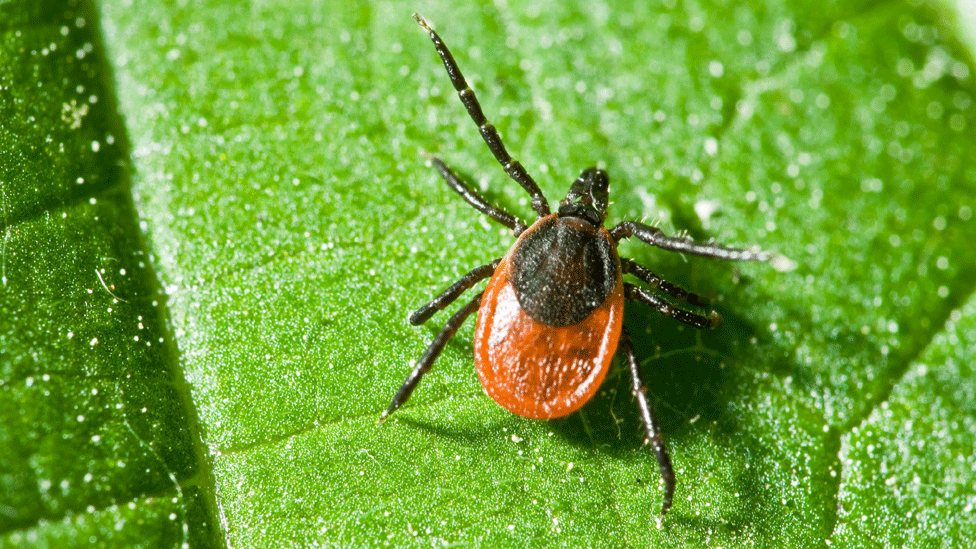Lyme disease cases on Uist 'higher' than neighbouring isles
- Published

Lyme disease can be transmitted to humans through a bite from a tick
The incidence of Lyme disease on Uist is far greater than that on neighbouring islands, according to figures gathered by BBC Gaelic News.
Over the last four years, a total of 165 individuals on North Uist, South Uist and Benbecula have been diagnosed with the disease.
In that same period, Lewis and Harris have recorded just one case and Barra three.
NHS Western Isles is developing an awareness campaign for Uist.
Lyme disease can cause arthritis and neurological problems if untreated. The infection can be transmitted to humans through a bite from a tick.
The figures for incidence of Lyme disease on the Western Isles were provided by medical practices across the islands.
The reason of the higher numbers on Uist has still to be fully understood. NHS Western Isles and other groups are investigating.

Lyme disease and ticks

A tick bite
Lyme disease is a bacterial infection that is spread to humans by infected ticks.
Flu-like symptoms and fatigue are often the first noticeable signs of infection. An untreated bite often shows as a distinctive red circle-like mark on a person's skin.
Diagnosed cases of Lyme disease can be treated with antibiotics, but, if left untreated, neurological problems and joint pain can develop months or years later.
Ticks are small arthropods related to spiders, mites and scorpions and Britain has a number of different species.
People are most likely to come across sheep ticks, which feed on mammals and birds, in open spaces with long grass or bracken.
Hillwalkers and climbers organisation, Mountaineering Scotland, regularly issues advice on how to avoid and deal with ticks.
It suggests people can protect themselves better by tucking trousers into socks or wearing gaiters, and also by making thorough checks of their bodies once back home. It recommends that these checks should be repeated over several days.
If a tick is found attached to a person's skin, it can be removed with a tick hook. If in doubt, seek advice from a doctor, Mountaineering Scotland says.

NHS Western Isles said: "We are aware of the difference in prevalence across the islands and, as geographically separate islands, we are not surprised that the patterns are different.
"There is different land use in North and South Uist as opposed to Benbecula and this may be related.
"We know that some people have expressed their concerns and views about the changing patterns of deer roaming, and the overlap in certain areas of deer and croft animals."
The health board already supports efforts to raise awareness of ticks, their presence and how to remove and treat them.
But a spokeswoman added: "However, we are developing a targeted campaign for the Uists that will focus on prevention of bites, tick removal and identification and treatment of tick-related disease in people.
"As tick bites tend to reduce in frequency in the winter, this will be in place prior to the spring rise in tick prevalence."

Sheep ticks feed on deer, an animal which has been increasingly appearing in villages and gardens on Uist
Scottish Natural Heritage, a public body with a responsibility for managing wild deer numbers, said it was also aware of islanders' concerns about the link between ticks and red deer.
A spokesman said: "We recognise that the deer population in Uist has increased and has been gradually using agricultural land more and moving into villages and gardens.
"It is a large host and, unlike domestic stock, they are untreated, therefore they play a significant role in spreading ticks into inhabited areas.
"In 2015 we brought together stakeholders to set up a voluntary Uist Deer Management Group. We have been supporting the group to develop a deer management plan which takes into account the various interests, including public benefits.
"This includes reducing agricultural damage, and an aspiration to reduce the tick burden, and also Lyme disease, in agricultural/inhabited areas in the Uists."
Landowner, North Uist Estate Trust, said it was important that the cause of the large number of incidence of the disease was properly understood.
A spokesman said: "We have also noticed a rise in the incidence of Lyme disease over the past five years and this is of major concern to us as our stalkers and gamekeepers are particularly at risk.
"If recent reports are to be believed there is a corresponding rise in many parts of Scotland and it is important that the underlying reasons are properly understood as we are encouraging more people into the countryside each year.
"Deer play a significant role in the spread of ticks and our local deer group have commissioned a deer plan that advocates a significant reduction in deer numbers.
"We are currently working to achieve the target cull recommended in the deer plan."
- Published12 May 2016

- Published21 July 2015
